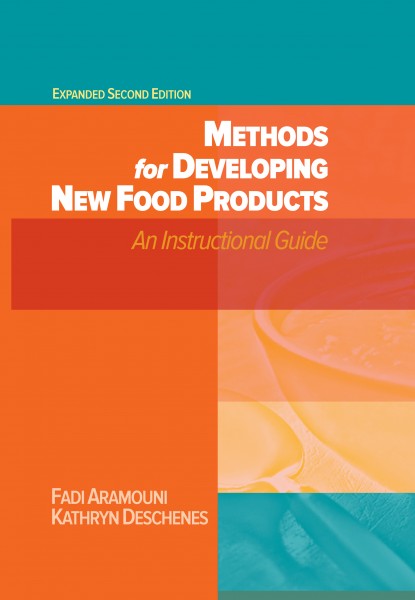Products that slide and glide

"Vibratory motion conveyors not only give you horizontal motion but vertical motion, as well, which tends to beat off the coating on products," notes Nathaniel Tynes, design engineer with High Liner Foods Inc., Lunenburg, Nova Scotia. The manufacturer of breaded and battered frozen seafood began incorporating horizontal motion units in 2000 to evenly feed multi-head weighers.
Capital costs and application requirements-vertical lift not only is acceptable but necessary in some cases-relegate horizontal motion to a niche role in food conveying. However, early versions of these conveyors were not without problems, forcing manufacturers to improve and refine their systems (see "Do the linear motion," Food Engineering, March 2005).
High Liner scrapped its first horizontal motion conveyors last year in favor of new servo-driven units from FMC FoodTech. The compact drive and lighter overall weight meant the conveyors could be suspended from the ceiling with significantly less support, says Tynes. Suspending the units isolates them from mezzanine vibrations.
A servo-driven horizontal motion conveyor named the Eclipse debuted last June from FMC FoodTech. With only three moving parts, Eclipse provides a significant maintenance advantage, according to Neil Anderson, sales & marketing manager. "The brute force of the servo driving the pan forward is offset by the backward movement of the frame, and that balance is very important in extending the unit's life," says Anderson.
Servo drives for this type of conveyor first were used in Australia, where TNA North America Inc.'s parent company is based. TNA fabricates vertical f/f/s systems for snack foods and granular products, and its Roflo conveyors are one of the components delivering materials to scales. "As manufacturers recognize the benefits of gentle handling and reduced mechanical parts in conveyors, we're trying to expand Roflo into other applications, including meat distribution and fresh-cut vegetables," says Susana Cristobal, Coppell, TX-based marketing coordinator. Packaging remains the primary focus, however. The firm recently installed its first gateless conveyor in a Mexican plant to minimize crushed and trapped product during staging.
Servos have been tried by Heat and Control Inc., but the company scrapped those in favor of an eccentric drive for its FastBack 260E. The conveyors move product up to 40 ft. per minute, double the linear speed of a comparable servo drive, says Heat and Control's Bill Klein. And with horizontal motion gaining a presence in frozen food conveyance, workers will appreciate the significant noise reduction compared to vibratory units.
For more information:
Neil Anderson, FMC FoodTech,
503-538-3141
Bill Klein, Heat and Control Inc.,
510-259-7721,
billk@heatandcontrol.com
Susana Cristobal, TNA North America Inc.,
972-462-6512,
susana.cristobal@tnarobag.com
Aseptic container wedges open door to microwave
While the first Tetra Pak machine to produce microwavable aseptic pouches just cleared US customs, the center of the firm's microwave universe is in Finland.Known as the Tetra Wedge Aseptic (TWA), the V-shaped pouch substitutes silicon oxide for aluminum as a barrier film. Tetra Pak's ambient carton division in Italy developed the filling system for the 200 ml (7 oz.) container, using a modified TBA/19 machine equipped with an ultrasonic transversal sealer (TS). Cartons are produced in the company's Lund, Sweden, converting facility. While the official European debut occurred last fall, commercialization of the pouches began the previous spring with the launch of five gourmet sauces under the VIA label. TV Chef Jyrki Sukula is VIA's public face, but the product was copacked by the chefs/founders of Puljonki Oy Ltd. in the village of Juuka, Finland.

"Kitchens and restaurants can't spend 22 hours to cook the bones and simmer the ingredients to make traditional sauces and broths," explains Falck. "They have two options: use a powder, which is cheap and fast but the taste is miserable, or buy a gourmet product like Puljonki's." Bag-in-box containers up to 10 kg and briks up to 1 liter have replaced sanitary cans for Puljonki's foodservice business, and TWA opens up the retail trade. "Microwavability required a new sealing system," Falck says. "That was the high-tech part."
Aesthetics drove package design, but the development process exposed a functional benefit. "When you cut open the wedge, it opens like a cylinder and product sinks about 2.5 cm below the top edge," he notes. Because there are no sharp corners, microwave's tendency to produce burnt product does not occur.
For more information:
Sverre Falck, Tetra Pak Finland,
sverre.falck@tetrapak.com
Damage-control containers
Container failure costs consumer packaged goods manufacturers $2.57 billion a year, according to MeadWestvaco Coated Board, and the root cause of returned food packages from retailers is carton board that failed to withstand freeze-thaw abuse.
Genco researchers evaluated 21,721 cartons using unbleached and bleached board for comparable products. Bleached, or SBS, is used for three-quarters of all frozen food products, while MeadWestvaco's coated natural kraft (CNK) is used for about 10 percent. It was introduced a decade ago, the same time Riverwood International introduced SUS, a similar kraft board.
Comparable products using different materials were compared. For example, Ruiz Foods' El Monterey quesadillas are packaged in CNK, while Specialty Brands Inc.'s Jose Olé uses SBS. Across all samples, products in SBS had a 2.77% damage rate, while CNK was 1.55%. For SUS, the rate was 2.33%.
"Marketers like the white look (of SBS)," allows Mike Skrovanek, MeadWestvaco's marketing director, " but a little change to CNK adds up to a lot of money." He pegs the reduction in unsaleables is worth $342 per ton of finished goods.
Ruiz Foods was an early convert to CNK, and the greater protection from moisture penetration provided by long pine fibers was a determining factor, says Kim Ruiz Beck, the firm's vice chairman.
For more information:
Michael Skrovanek, MeadWestvaco Coated Board,
334-448-6392,
mrs@meadwestvaco.com
Looking for a reprint of this article?
From high-res PDFs to custom plaques, order your copy today!




